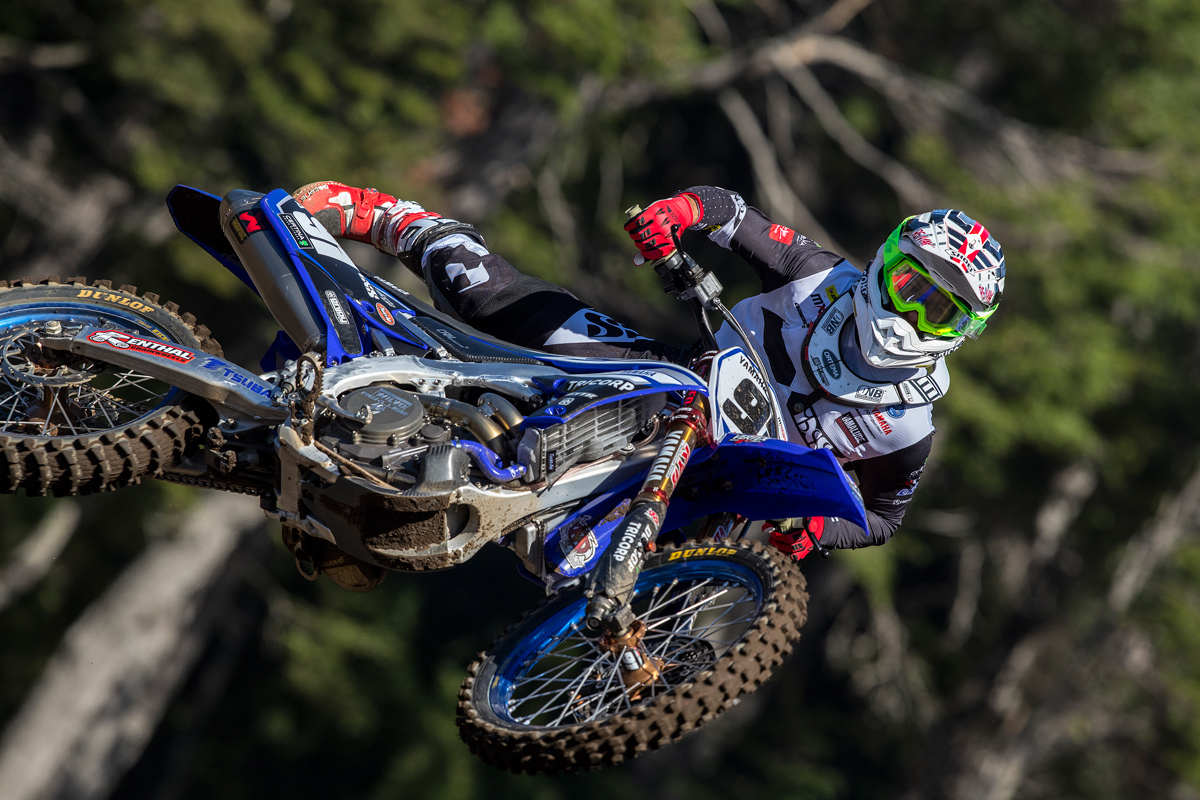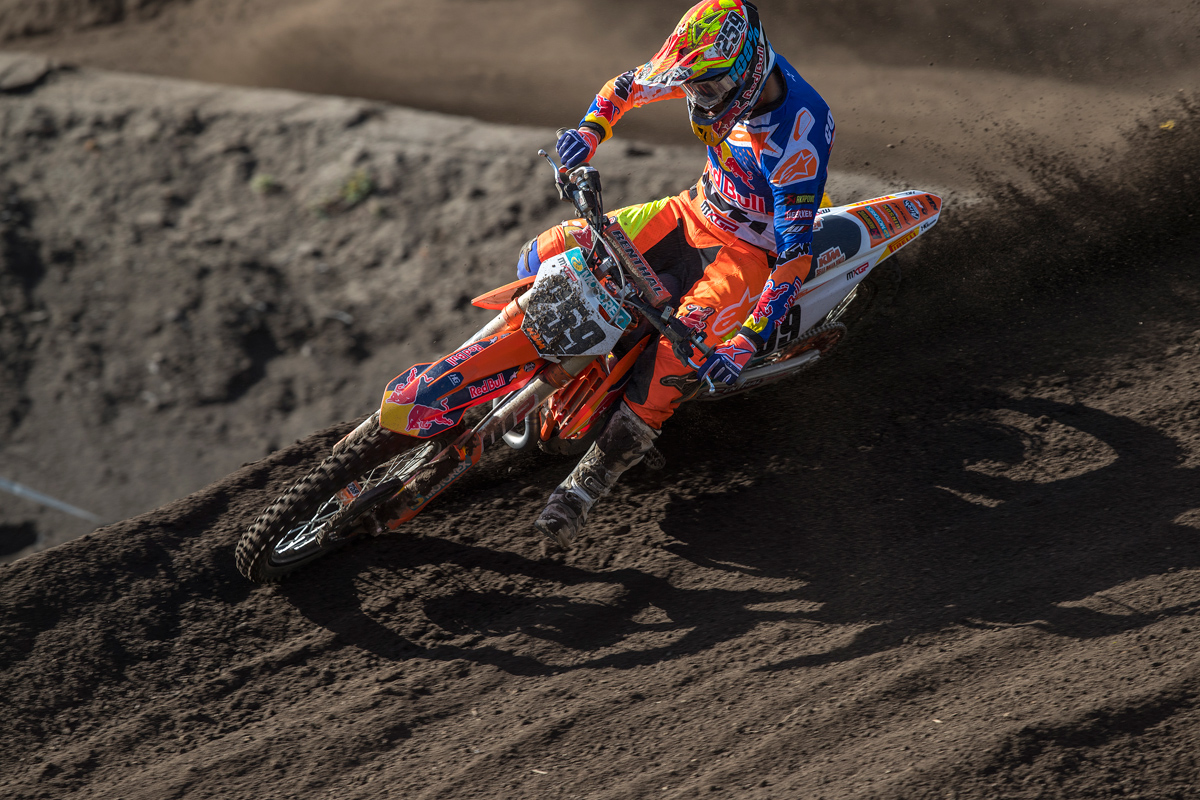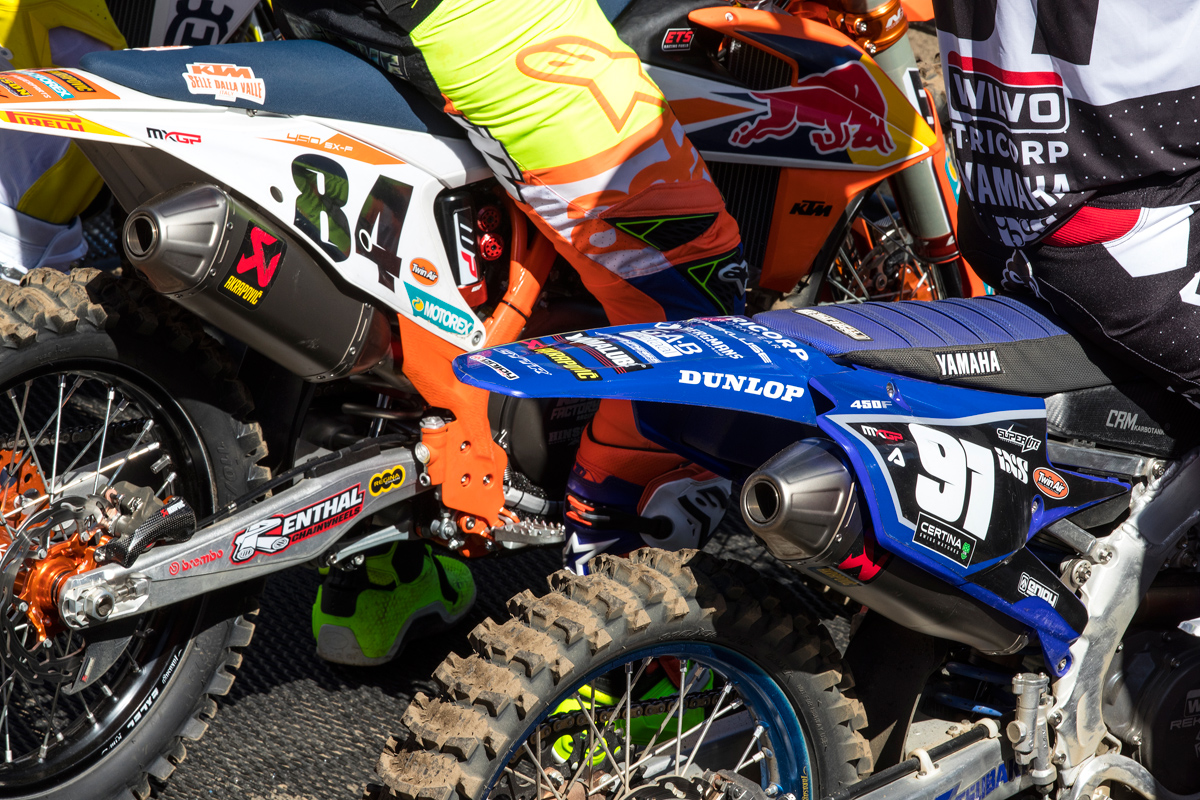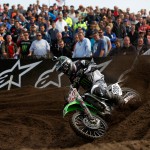2018 MXGP started with echoes of opinion drifting across the Atlantic and the hard-hit Supercross series. The subject of whether 450cc four-strokes are to blame for the high attrition rate and injuries in the premier class of the AMA contest has floated to the surface once more. It is a recurring debate, one almost ten years old and when the performance of the motorcycles started to accelerate further in the middle of the last decade.
Grand Prix has not escaped an occasional packed casualty list; the MXGP title is actually proving to be something of a curse. In 2015 Tony Cairoli – the defending champion – broke his left arm, in 2016 Romain Febvre suffered a concussion, in 2017 Tim Gajser battered himself on several occasions. (Cairoli had better exercise a degree of caution this summer).
The bikes? The tracks? Or – whisper it – maybe just the riders themselves and the mix of insatiable ambition (that also leads to other harmful elements like obsessive training and dieting) and knowledge that under-performance can sink a career in a narrowing elite of factory teams and saddles? We canvassed some opinions in the ordered paddock set-up in Argentina and, unsurprisingly, the explanations for the pain-and-no-gain varied.
A sensible place to start would be a racer who is green (or blue?) to the demands of thrashing a 450 at the ragged edge. Wilvo Yamaha’s Jeremy Seewer moved from a brilliantly staggered path of progress in four years of the MX2 class (missing out on the title at his last attempt in 2017) to the prospect of a YZ450F for 2018. The Swiss’ small (ideal for a 250) stature had already invited doubts as to his capabilities for the bigger bike. In Argentina he both dispelled and kept that judgment in a grey zone with his top ten finish and then major crash in the second moto. Although relatively inexperienced at Grand Prix with the 450, Seewer’s winter work only months after striving towards MX2 glory meant he had a fresh perspective. “I think it’s true that over the years it has become easier and easier to ride the 450,” he opines. “I remember growing up as a 250 rider and people, my friends, were saying ‘450s! I don’t have any fun on that bike, it’s too fast, I cannot handle it or corner well.’ Since then I think they [the manufacturers] have made such a big step with the chassis and the handling. I expected it to be a heavy machine and hard to steer but on my first time I was smiling because it is such a nice bike to ride.”

With the second generation of their YZs Yamaha used the same frame and chassis for both YZ250 and YZ450Fs, something that is now common practice. It seems the crux of the problem lies in the powerplant. While MX2 teams sweat to increase horsepower (and toy with reliability) and shed grams, MXGP engineers, mechanics and riders continually morph 450cc grunt with the aid of electronics to somehow squash and contain the best of the technology.
“We could have much more powerful bikes and the engines could produce a lot more horsepower but we are looking at rideability,” says Red Bull KTM MX2 Team Manager Dirk Gruebel (overseer of MXGP riders Jeffrey Herlings and Glenn Coldenhoff also) of the 450cc plight. “I think extra power would be too much to handle. If something goes wrong on a 250 then you might have a better chance of saving it. If you whiskey-throttle a 450 one time then it’s gone.”
“We’ve had this level of power for a long time and the work is more about trying to get that bike good for your rider,” comments HRC General Manager Marcus Pereira de Freitas. “I don’t think we have too much power with the 450s…some riders complain that they still need more! If you are talking to a rider that is on the bike just twice a week then perhaps it is a lot…there are some that still want more. The durability of the bike is one of the most important things for us as well as a safe bike for the riders. We don’t want any issues on the track.”
Actually pushing the limit with a 450 doesn’t seem to involve taming the fire-breather that many assume. The difficulty for MXGP athletes is harnessing all that power to create a bullet from the start gate but then having a motorcycle that is both quick enough to tackle the competition while permitting the rider to find his own boundaries of performance and speed. This is the predicament that Febvre fell into during 2017 where the search for a rapier factory YZ450FM during the winter produced a 450 that was too much for the Frenchman (who likes a relatively docile dirtbike) to drill all the way to the chequered flag across diverse terrain.
“Electronics nowadays help a lot,” says Seewer. “There are guys out there using traction control and they can open the throttle hard and the system takes the power away while still accelerating. It’s a safety system but if it doesn’t work then you are ‘off’ the bike.”
“We are all going for the best lap-time and that doesn’t mean max power, it means getting the bike easy to ride and comfortable for you,” says MXGP rookie and 2017 British Champion Graeme Irwin, a newcomer to the technical demands of Grand Prix tracks and almost touched his goal of a top fifteen placing in Argentina on his debut with the Hitachi ASA KTM UK team. “If the bikes were animals and impossible to ride then that is obviously a problem but nowadays we have so much technology that we can change the bike how we want it. We make it to suit us. I don’t think there is any problem with 450s; bring them up to 500s!”
“A 450 is a completely different animal but if you keep it in control then it is safe and normal,” Seewer assures, but then – prophetically as it would turn out – added: “It’s fun also, it’s not like I am thinking every lap ‘that thing is too fast it’s gonna highside me out of the track’.”
“Racing and riding are different stories though,” he continues. “I came to this team, started to ride and after a few days I asked for more power! 450s these days are really strong but if you are smooth with that throttle then it can help you.”

If a 450 can be manageable then what is the decisive factor? (if there is one) Maybe it really comes down to the level of anxiety with the right hand. “The field is so competitive and we have a lot of strong guys,” says Red Bull KTM’s Glenn Coldenhoff. “In the back of your mind you know that if you don’t perform then you will lose your spot in a good team. I think everybody is taking more risks. I don’t know how it is in the US but the level is so high here. It’s difficult man, even in practice you need to go above your limits and in the race you need to do that for longer and it’s where the injuries come from.”
That’s not to say that motocross professionals are excessive with throwing their safety to the wind. It could be that the most reasonable and perhaps mundane explanation for the rate of injury is just due to the perilous nature of the sport itself. The energy, aggression and passive violence needed to race at high speed can be shocking for those watching the action close-up for the first time. “The bikes are quick but it is a tough sport and I don’t think people realise exactly how much,” says Bike it DRT Kawasaki’s Tommy Searle, a prolific MX2 Grand Prix star who has yet to seize a podium finish in the MXGP category after a catalogue of poor luck with injury since 2013. “Mistakes happen and you pay for them. When I’m riding I don’t feel the bike’s speed is too much…but then we are pushing to the next level so you know that you need it fast. You know when you are on a slow bike, and with the competition we are up against you cannot have something that is ‘nice’ to ride any more. You need one that is powerful and strong because the competition is always raising the bar.”
Searle actually turns the topic back around to the technology. “It is not the speed but how good the bikes are that us, as riders, can take so much from them. You are seat-bouncing quads in supercross and hitting the whoops absolutely flat-out. The same with us here in MXGP: you expect so much from the bikes these days that you see a section and you know it is rough but you don’t slow down anymore. You just think ‘the suspension is good…I’ll go flat-out’. There are ruts and kickers on jumps but we know we cannot afford to roll a jump so if we get a corner a bit wrong then you still go for the jump. If you don’t commit then you’ll get passed. At this level you cannot afford not to do anything! We expect that much from the bikes and suspension so that when it kicks you then you’re left thinking ‘why did it do that?!’ Fifteen years ago if there was a bump or rut on a jump then you’d have a bit more respect.”

An old suggestion to try and preserve the health and entry lists of MXGP was to consider 250s for the blue ribbon division. However marginalising the bigger bikes would send a tsunami through the industry, and one can only imagine the reaction inside the MSMA; the manufacturers representative group. When re-surfacing the idea in Argentina as a ‘hypothetical’ some riders voiced their thoughts that the MX2/250 class seems to produce less injuries (although Star Racing Yamaha’s Dylan Ferrandis may disagree after his Atlanta accident last weekend) while others believe there is little difference between the categories. The physicality argument – one that people frequently cite as disadvantage of the MX2 23 year ago rule forcing smaller, slighter riders out of their class and away from a natural fit on the quarter-litre machine – also crops up. “Tall or heavier riders would definitely be at a disadvantage because the torque is less and the power also,” says Gruebel. “You cannot compensate for weight. These guys are operating on a limit already and you cannot tell them to lose another ten kilos.”
“I like the 450 at the moment and it would be difficult to step down,” says Coldenhoff, a rider who has won in both divisions. “We have a really good handling KTM right now. There is no need to go to a 250.”
Injury prevention or reduction is a murky subject without a quick fix as promoters would be reluctant to force the hands of the manufacturers, and the governing bodies like the FIM and AMA are caught in the compromise between optimising safety but also safeguarding the future of the sport and trying to spread the word of its excitement on both sides of the track markers.
Injury is disappointing for fans, disruptive for companies with investment into the sport and bloody painful and traumatic for the athletes themselves. The shock of a big or unexpected accident never subsides. It is a horrible element of motocross that is accepted and frequently dealt with but rarely addressed beyond the complaints of riders about tracks and some industry innovations like neck braces, airbags and helmet technology. For now the best solution has been to focus on the ‘stage’ itself but one person’s safe circuit is another’s boring and unchallenging layout. Credit to Feld and Youthstream for making increased efforts to maximise track security but it is a notoriously tricky blend to get right and to suit the majority.
Injury in motocross has seemingly soared through the decades but so has awareness. It is now possible to re-watch and dissect accidents and the 24-7 aspect of social media means that athletes like Ken Roczen can update his fans and an audience fixed on the next ‘online shocker’ to the full gore and discomfort of a sport-related ailment.
450s? Like the consideration of braking bumps or ruts to a high-speed corner, it can be damn difficult to pick the right line.
Images by Ray Archer








